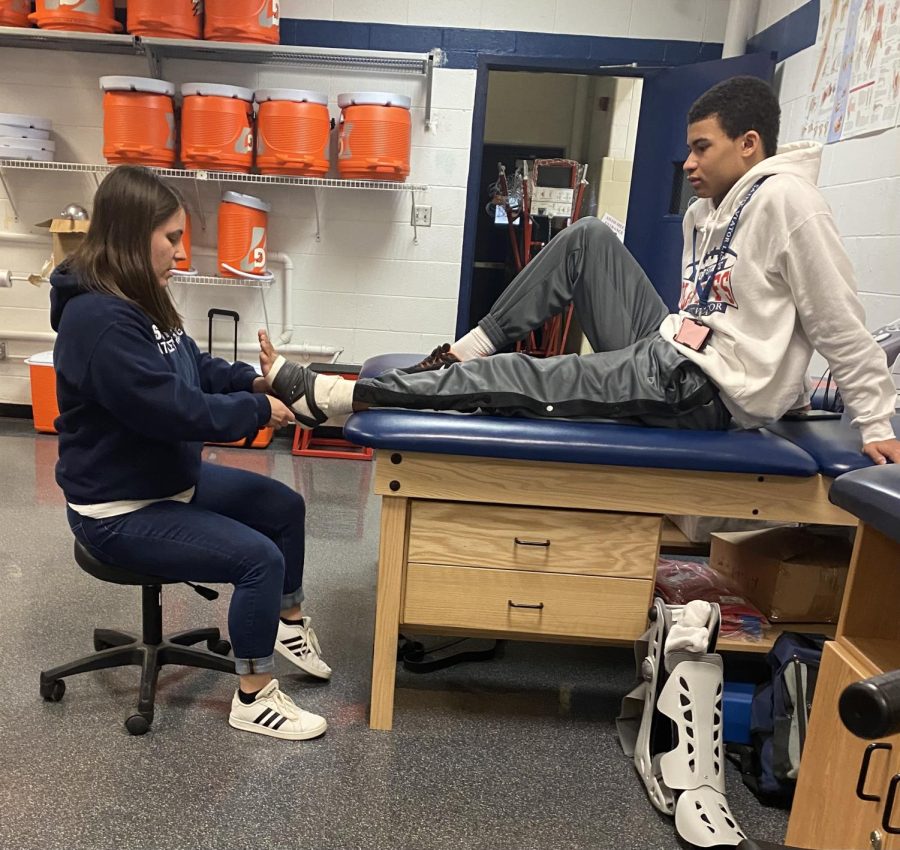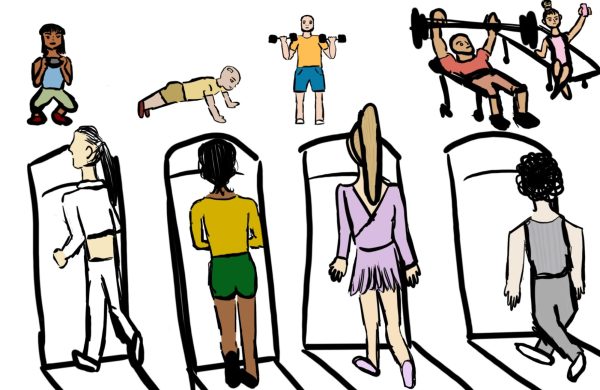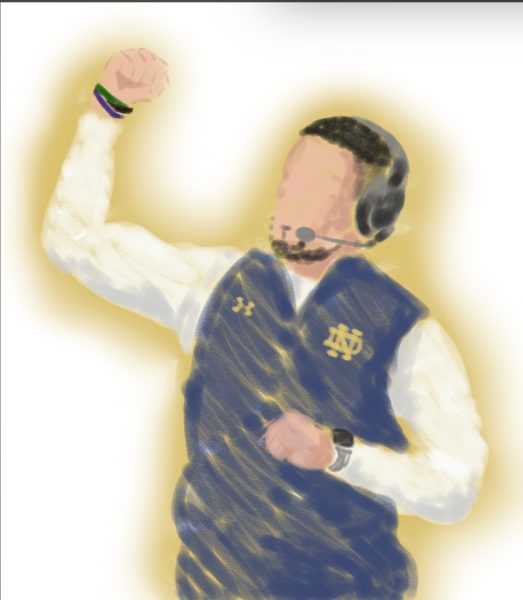Proper recovery agglomerates sports health
Swoosh…BUZZZ!!! The crowd erupts in cheers as the final shot enters the basket. Lions win! Players excitedly rush the court and victoriously raise their newly secured trophy. One, however, stares longingly from the sidelines. A recent shoulder injury has temporarily incapacitated the once thriving athlete.
Proper recovery is essential to an athlete’s physical and mental well-being. Saint Viator takes numerous precautions and preventive measures in regards to athletic safety in and off season.
In season, the best way to keep athletes healthy and productive is through active recovery. Dr. Arika Cozzi ‘08, an athletic trainer, explained the science behind this essential practice.
“Active recovery increases blood flow to bring healing agents that break down waste accumulation from high intensity exercise to the body’s soft tissue,” Cozzi said.
Forms of active recovery vary, but physically, some include walking, yoga, moderate practices, and low intensity weight training. In season, weight training becomes particularly prevalent in preparation of and following a large competition to ensure athlete safety.
Mental-based recovery activities such as team bonding, yoga, meditation, and watching film are crucial, as they provide a break from the often grueling and repetitive physical demands of a sport. These interludes help combat burnout and minimize athletes’ temptations to quit. Sophomore swimmer Kate Maloney expressed her appreciation for rest days.
“It’s nice having the ability to slow down as well as time to physically and mentally recover,” Maloney said.
Off season, recovery is fostered in two specific ways: lift sessions two to three times a week and monthly “deload weeks” in which volume and intensity of workouts are greatly reduced.
Typically, a weekly lift routine will include, minimally, an exercise that hits each primary movement pattern while addressing mobility, balance, and proprioception. Sophomore field hockey player Olivia Strozak expressed her opinion on lift.
“It’s great having the opportunity to build strength while still having plenty of time to rest and do other activities,” Strozak said.
Additionally, while discussing the best ways to equip student athletes with the tools they need, strength and conditioning coach Alex Nadolna revealed the most vital components of recovery.
“No workout or supplement will ever be as effective as sleep and a healthy diet,” Nadolna said.
By maintaining these practices, athletes are able to actively prevent injury and optimize performance on and off the court/field. Furthermore, these practices become ingrained and allow the athletes to live as healthy, well-balanced individuals.
Your donation will support the student journalists of Saint Viator High School. Your contribution will allow us to purchase equipment and cover our annual website hosting costs.





